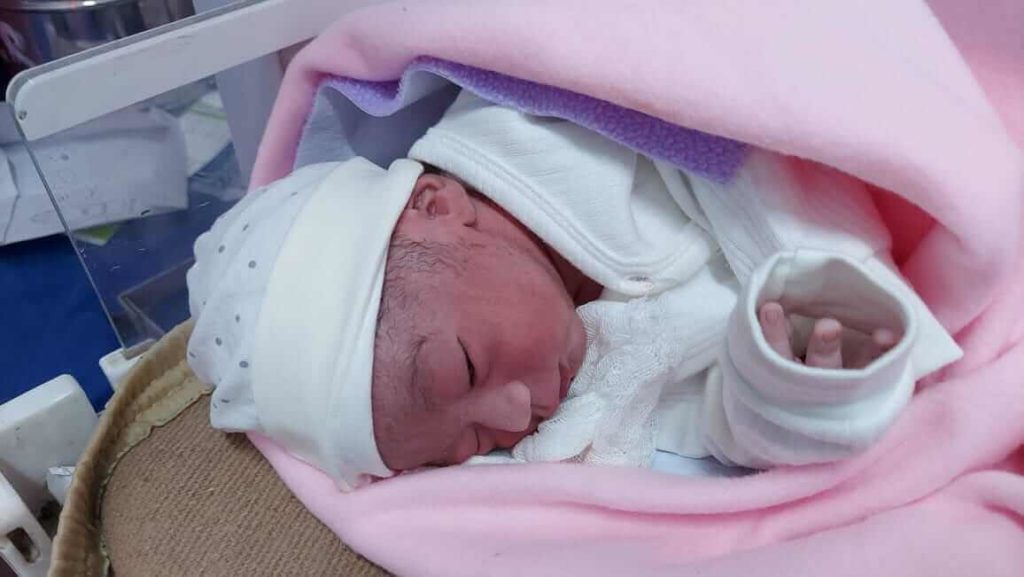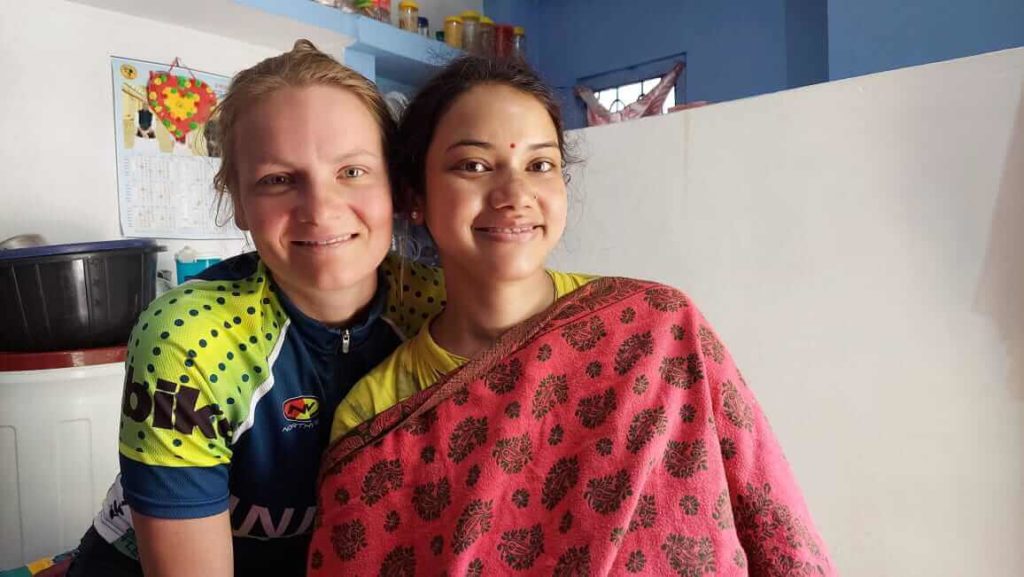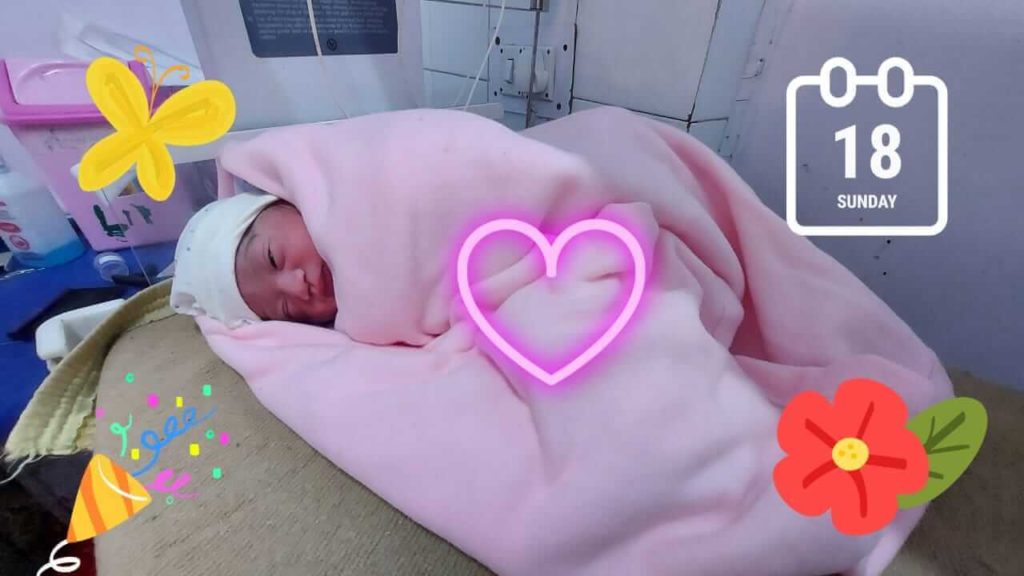One word in advance
The following content of the article does not present the health system in India in the best light. In fact, I have already been advised not to publish the perhaps deterrent article. After all, I offer tours in India and shouldn’t put off my potential guests. Because as a tourist in a subtropical country with a lower general hygiene standard and exotic disease incidence, you naturally want to be sure of good medical care. Therefore at this point a few lines as a note in advance. I decided to publish this article because I want to portray India without make-up and authentically. This authenticity also characterizes my travels. The fact that the medical supply network in India has its limits can also be seen in the difficulties with the current corona pandemic. However, I would like to point out that this insight into an Indian maternity hospital has been very subjective and selective and one cannot extend this experience to the whole of India. It was on a certain day, in a certain hospital, in a certain place. Maybe I would get a completely different impression in the same hospital today. When I was treated in a state hospital in Kerala in South India three months ago, I had a very good impression of the hospital and was even positively surprised that the excellent treatments were also completely free of charge! On the other hand, it is still the case in India that there is a multi-class system. The Indian middle class and upper class nowadays mostly have health insurance and like to afford the western standard of a private hospital. I myself almost exclusively visit the nearby private clinic. This of course costs, whereas the state hospitals offer free medical care. With a population as high as in India, these are accordingly well attended.
The free treatment in Indian state hospitals is not intended as an excuse for unsanitary conditions and unfriendly treatment by overworked doctors. But travelers to western India should know that during their trip to India they will (almost always) have the opportunity to be treated in an excellent private hospital in the event of illness, in which the standard is even more luxurious than that in western hospitals and the doctors are excellent. It is not for nothing that so-called “medical tourism” is booming in India. Because dental treatments or certain operations are still significantly cheaper than in Germany, for example. In addition, the experience in the hospital encouraged me to work even more for the conditions and rights for socially and financially disadvantaged women and children. The dream of a free health center for mothers and children with an orphanage, training center and yoga and Ayurveda center seems more real than ever and I am currently in the process of gathering the necessary information for such a project. In this sense, let us not turn a blind eye to certain grievances and injustices, but use these experiences and impressions to make the world in which we live a little bit better, step by step. Have fun reading the article, Sarah
Despite all the suffering that India is experiencing in this new Corona wave, there are always small rays of light and miracles. It was such a miracle for me to witness the birth of my nephew Kushals on April 18th. My sister-in-law’s son (Pooja) was born safe and sound with a total weight of three kilos – quite a chunk for such a petite mom. It was myself who held the little one in my arms for the first time and also attested the gender with my signature.
But how did it come about that I was the mum’s companion at the birth?
Well, in India it is customary for the wife to move to the husband’s family. So three years ago after her wedding, Pooja moved to her husband in Shimla, where I and David (her brother) also live. All other family members on your side live quite a distance away.

Pooja asked me to be her companion in the hospital during the birth. Men are not allowed in the delivery room and Pooja felt more comfortable with me than with her mother-in-law. She also said that some documents had to be filled out at the hospital and that her mother-in-law could not read or write.
Of course I agreed. On the one hand I wanted to be there for Pooja, on the other hand I was excited to see a birth and the circumstances in an Indian hospital.
Only a few months ago I completed my training as a pre- and postnatal yoga teacher and in this context I had dealt a lot with the topics of pregnancy, childbirth and postpartum. Now I was curious about the reality. Also because I would like to have children myself at some point and thought giving birth in India was possible.
When Pooja contacted me shortly after midnight on April 18th, I wasn’t really enthusiastic at first. I had just lay down to sleep. The due date was set for April 26th, so the child came a little early – it would definitely be a boy. Nevertheless, I quickly packed up a few things, drank a strong black tea to drive away the tiredness and was then driven to the hospital by a friend on a motorcycle. On the way my friend warned me and said that the hospital did not have a good reputation and that sometimes the newborns would even die.
This warning surprised me. This hospital is a state hospital specializing in mother and child diseases and treatments. Emergencies and complications in the course of pregnancy and childbirth are sent to this hospital from all over Himachal Pradesh. So it’s no wonder that there is a slightly higher mortality rate in this hospital, with all the emergencies. I remember that 3 years ago a friend’s wife was in this hospital for a full 10 weeks because of high blood pressure and ultimately gave birth to a healthy girl.
When we got to the hospital, Pooja, her husband, his brother and mother-in-law had just arrived.
While the other three would be waiting in the car in front of the hospital, I made my way to the ward with Pooja.
There was a lot of activity there and for a long time Pooja and I just waited. Pooja’s contractions came every 8 minutes and her amniotic sac was not yet broken. I didn’t know much about the birth itself and for now I just let myself go. I was afraid that there would be no labor pains and that we would be sent home again. Again and again a doctor came frantically and asked what we were doing here. Then we were sent to a room to await further instructions. Nobody came. Another pregnant woman was also in the room with her companion. The loungers were filthy, worn syringes were lying around everywhere.
Every now and then a nurse would come and carelessly wash off bloody surgical objects with water. I sincerely hoped that this would just be the pre-cleaning.
In between I used the toilet – everything here was full of blood, urine and stool. On the way there I passed women who slept in the hallways.
Pooja and I got impatient. It was now almost 2 a.m., and after the contractions had stopped for a while, they were now more regular and stronger.
In order not to be completely forgotten, we left the room and went straight to the delivery room to draw the doctors’ attention to us again. The doors were open and there was a coming and going of pregnant women, doctors, relatives and nurses.
I, actually a very robust and tough person, had to contend with a brief wave of nausea when I entered the large room. There was blood everywhere, a freshly baked mother was just being sewn, women lay lined up on beds with their legs apart, the smell of blood was enormous.
There had to be around 5 doctors, completely overtired and overworked and accordingly irritable, unfriendly and irritated. Again and again we were asked why we were here … Pooja’s situation was actually clear enough. At some point a Corona quick test was done – only for Pooja, not for me – and faster than expected, Pooja was now in one of the 6 beds in the delivery room.
At this point Pooja was still in control of her pain and we looked at the bed assigned to us with disgust. It was clear that there was another woman lying here just before – old and used blankets, masks and the sprout bed indicated that no cleaning had taken place. We were hesitant – how could Pooja have a child here in her vulnerable condition.
But we had neither time nor choice. We were approached imperiously by a doctor who told Pooja to finally lie down and spread her legs.
I was sent to the sister with forms and had to fill out and provide some documents together with Pooja’s husband (whom I met in front of the station). Everyone spoke to me in quick Hindi and I was happy to at least be able to figure it all out. Everything had to happen quickly.
In the meantime, Pooja’s stomach was pushed around, she was rudely instructed to relax, and without any form of explanation, her amniotic fluid was cut open in a jiffy. Pooja was in pain and felt terribly uncomfortable. Her pain medication was given via a drip – again without the patient’s explanation or knowledge.
I was now viewed with a little curiosity on the part of the doctors. It was probably not often that a foreigner was there as an escort. I was told I could wait outside now. But I didn’t want to leave Pooja here alone and stayed.
I couldn’t do much. When the increasing contractions came, I tried to help Pooja, every now and then helped her in other positions, gave her water, held her hand, and breathed with her.
I watched the pregnant woman two beds away, all alone, she writhed on the bed in pain and was repeatedly reprimanded by the doctors that she shouldn’t make such a noise and lie still. It had to be around 3 a.m. Not much happened for the next 2-3 hours. Little attention was paid to the women in labor, the doctors filled out forms or simply fell asleep. I was happy to be with Pooja, but I couldn’t do a lot and I got a little tired too. At some point I was sent away by a new doctor. Relatives have no business here.
Still, I visited Pooja every 10 minutes.
Then at some point, it was very clear – it started. Pooja, half in a trance, began to squeeze and squeeze. This was also noticed by a nurse who brought Pooja into the correct position and excitedly called for the doctors – there was none. So I held Pooja’s hand, breathed with her, and instructed her to squeeze whenever there was a wave of pressure pains. The cervix was now clearly open, I could already guess the baby.
Then finally the doctors came and told me to leave the room and to have the clothes ready for the baby. How quickly it all happened at once. I was completely filled with adrenaline, happiness and emotions. From a small window I could watch the birth and see how the little creature slipped out of Pooja. Not before Pooja has cut something on the perineum – a completely normal procedure that apparently every woman undergoes here!
The child was born at 6:25 am.
I didn’t hear a peep and was worried the baby wouldn’t breathe, but after a cough, everything was fine. The baby was placed on the mother’s stomach and the umbilical cord was cut.
I quickly got in touch with the young father, swallowed a few happy tears, and got the baby clothes. In addition to our private clothes for the baby, we now also received a large bag with baby clothes, blankets, diapers and hygiene products – a welcome gift from the State of India.
The nurse and a doctor hurriedly called me into a small room, where they were waiting for the clothes with the tiny baby. While the sister was looking for clothes, the doctor presented the male gender of the child and asked me whether this child was a boy or a girl. At first I thought the doctor was making fun of me. But in fact this question served a necessary formality in which I attested the child’s gender with an additional signature.
In India, the gender of the child is not allowed to be announced by the doctors before the birth, as unfortunately many female fetis are still aborted, as a daughter is often a (financial) burden and only the son, as the epidermis, continues the family can lead.
But Pooja knew that she actually wanted a girl, which is still a bit unusual in India, because here the son is considered important for the continuation of the family. Pooja later trusted me that she couldn’t believe it when she was told it was a boy. Of course, Pooja still loves her son more than anything.
While the sister wrapped the child in pink and white clothes and warm blankets, she gleefully babbled on me in Hindi. On the one hand because she was very excited that I could speak some Hindi, on the other hand because she was now hoping for a reward for the boy. Unfortunately, she had a bit of bad luck with me, because nobody had told me anything about this custom. Later she would receive 500 rupees from her mother-in-law, with which she did not seem quite so satisfied.
But now it was time for me to poke the little one up. Such a sweet boy, my heart got really big and I immediately built a very special relationship with Kushal.

Kushal shortly after the birth 
Kushal’s Birthday 18. April 
Happy Parents 
Kushal 11 Days old 
Me and Pooja 4 days before the delivery
But until the ceremony with a priest in 11 days, the boy would first be nameless. That was pretty unusual for me. In another article I will describe Kushal’s ceremony in more detail. Now back to the hospital.
While I was taking care of Kushal, who was lying under a heater, pooja was sewn up. Then they went together into an adjoining room. Baby and mom were assigned a bed together. Now the mother-in-law came along and I was happy about it, because I realized that I had no idea how to look after them now. Despite her exhaustion, Pooja immediately nursed the little one. It was a huge surprise for me that it worked so early and straight away. After a cup of warm ghee for pooja, the two fell asleep.
Fatigue overwhelmed me too. I hadn’t given birth to a child, but I’d been up all night and the adrenaline was gone. Still, I stayed awake by the two of them.
Every now and then mother and child woke up, then there was something to eat for both of them. For the baby the milk, for the mother milk and kitchadi (porridge made from rice and lentils), as well as warm water to drink. Pooja’s husband took care of the food from outside – there didn’t seem to be any food from the hospital. At some point after a few hours the doctors called for Pooja. Suddenly everything got hectic again. The doctors were horrified that Pooja had not yet given a urine sample and sent me in the fast Hindi and very unfriendly to get some medication. Everything had to be done in a hurry again, and of course Pooja was anything but fast! I was amazed that the same doctors were still on duty. After all, we’ve been here for almost 12 hours. Later I found out from a particularly unfriendly doctor who had always yelled at me and found you sleeping on a chair somewhere, that she had been on duty for 36 hours!
At around 1 p.m., all new mothers who had given birth to their children that night were brought with their babies to another building – the weakened women had to run there!
After all, it was a large shared room in a new building with freshly made beds. Now the fathers were finally allowed to see their wives and children and take them to the ward.
After I confirmed to myself that the weakened Pooja and her child were now in good hands, I said goodbye to everyone exhausted. I badly needed some sleep. I was happy to get some fresh air, it was broad daylight and it felt strange to walk through Shimla like that, as if nothing great had happened last night.
The next day I visited Pooja and her child in the hospital. Both looked clearly strengthened and had already got used to each other. I helped Pooja with changing diapers and was promptly made wet by the little one – but was prepared for it, because I had now been able to read a little.
That same evening, after a few examinations, the two were released and were able to go home. There have already been 2 corona cases in the hospital. We were lucky that the baby was in such a hurry. In the next few days, the corona situation would increase dramatically with the second big wave in India.





